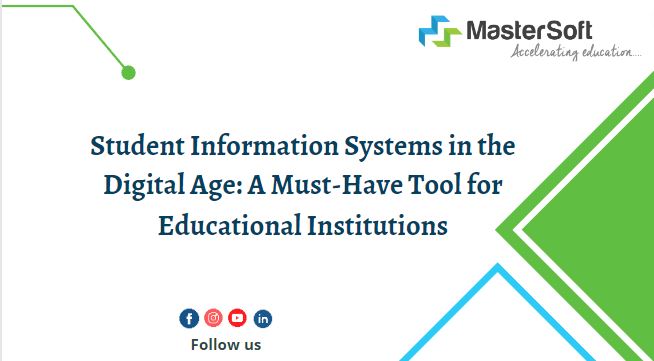
Student Information Systems in the Digital Age: A Must-Have Tool for Educational Institutions
In today’s rapidly evolving digital landscape, educational institutions are embracing technology to streamline their administrative processes and enhance the overall learning experience. One such transformative tool that has gained immense importance is the Student Information System (SIS). A comprehensive SIS has become a must-have for educational institutions, revolutionizing the way they manage student data, communicate with stakeholders, and optimize academic operations.
What is a Student Information System (SIS)?
A Student Information System, often referred to as an SIS or MIS (Management Information System), is a centralized platform that assists educational institutions in managing student-related data and administrative tasks. It encompasses a wide range of functionalities, including enrollment, registration, grading, attendance tracking, communication, and more. SIS software consolidates all these processes into a unified digital ecosystem, making it easier for administrators, teachers, parents, and students to access and interact with relevant information.
Key Benefits of an SIS in the Digital Age:
Efficient Data Management:
Gone are the days of paper-based record-keeping. SIS allows institutions to store, manage, and retrieve student data digitally, minimizing the risk of errors and loss of information. This streamlines administrative tasks such as student registration, scheduling, and transcripts issuance.
Enhanced Communication:
SIS platforms facilitate seamless communication between educators, parents, and students. Teachers can update parents about students’ progress, assignments, and announcements, fostering a collaborative learning environment. Instant notifications and online portals ensure timely information dissemination.
Data-Driven Insights:
Institutions can make informed decisions using the data analytics capabilities of an SIS. Educators can identify trends, monitor academic performance, and assess the effectiveness of teaching strategies. This data-driven approach supports personalized learning and continuous improvement.
Accessibility and Convenience:
SIS platforms provide 24/7 access to academic information from anywhere with an internet connection. Students and parents can check grades, assignments, and attendance records at their convenience, reducing the need for physical visits to the school.
Streamlined Administrative Processes:
Automation features within an SIS reduce the administrative burden on staff. Tasks like generating report cards, tracking attendance, and managing class schedules are automated, freeing up time for educators to focus on teaching and engagement.
Secure Data Handling:
Privacy and security of student data are paramount. A robust SIS ensures compliance with data protection regulations and employs measures to safeguard sensitive information from unauthorized access.
Support for Online Learning:
The digital age brought about a surge in online learning. An SIS can seamlessly integrate with virtual classrooms, e-learning modules, and digital assessment tools, creating a comprehensive virtual learning environment.
Challenges and Considerations:
While SIS offers numerous advantages, implementing and managing such a system requires careful consideration:
-
Training: Adequate training for teachers and staff is crucial to maximize the benefits of an SIS. Without proper training, the system’s potential might not be fully utilized.
-
Integration: Integrating an SIS with existing software and platforms can be complex. Compatibility issues and data migration challenges need to be addressed.
-
Data Accuracy: Accurate data entry is essential to ensure reliable insights. Instituting data validation checks and regular audits is vital.
-
Cost: Implementing and maintaining an SIS requires financial investment. However, the long-term benefits often outweigh the initial costs.
-
User Experience: The user interface and experience should be intuitive and user-friendly for all stakeholders, including students, parents, teachers, and administrators.
Conclusion:
In the digital age, Student Information Systems have evolved into indispensable tools for educational institutions. They empower institutions to manage data efficiently, enhance communication, make informed decisions, and streamline administrative tasks. As technology continues to shape the education landscape, an SIS remains a foundational element in fostering a conducive learning environment for students and ensuring the seamless operation of educational institutions.



